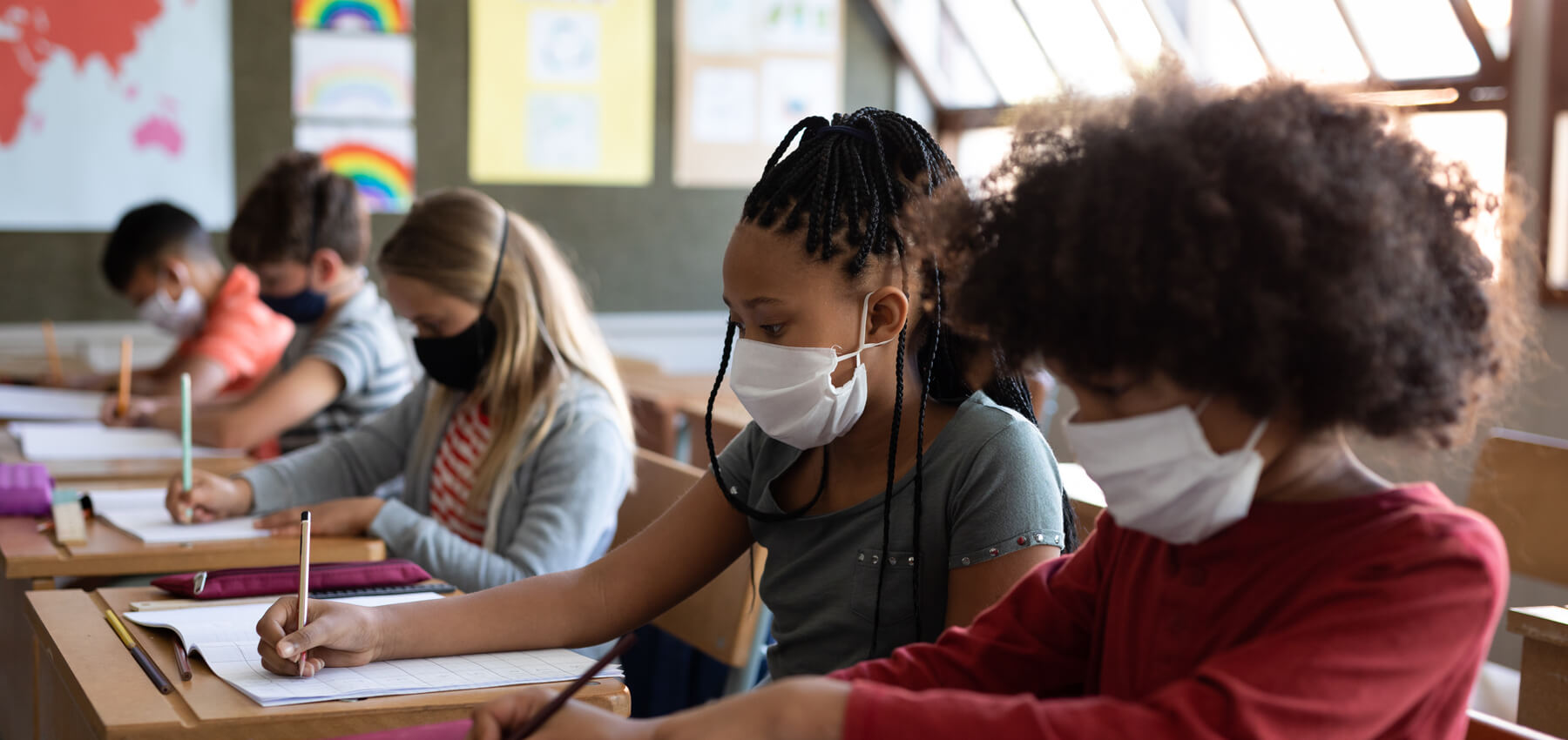Each fall, going back to school is both an exciting and stressful time for children. As a newcomer, it can be overwhelming to navigate a new school system at the best of times, let alone during amidst the ongoing certainty of the COVID-19 pandemic. However, with the situation improving, most school districts in Canada have returned to the in-person learning model.
If this is your children’s first year in a Canadian school, or the first time they’ll be attending in-person classes in Canada, here are some back-to-school tips to help make the transition to a Canadian school a smooth one for your children.
In this article:
9 back-to-school tips for newcomers
1. Follow a routine
Kids respond well to routines; they reduce anxiety and let them know what to expect each day. This is even more true as a newcomer. Do your research in advance so you know what to expect on your child’s first day of school. Will they take the bus? What time is lunch? Will they bring their own lunch or will it be provided or purchased? What is their class schedule like? The more information you can share with your child in advance of their first day, the better. Try to create a consistent morning routine at home with the same wake-up time, breakfast routine, and drop-off routine each day to get them started on solid footing.
2. Check with their school for essential items to purchase
The last thing you want is for your child to show up to school without an essential item. Find out in advance if you need to purchase school supplies like binders, notebooks, pencils, and calculators. Also ask whether you need to provide lunch (in which case you’ll need a lunch box) and whether they need to bring any special clothing or shoes for athletic activities. Find out where your child will store their belongings. If they have a locker, consider shopping for items to personalize it. This will help them feel like they have their own space in their new school and help build excitement for their first day.
| Tip: If your child will attend school virtually, be sure to purchase essential tech items like a laptop with a working webcam and/or a tablet with a keyboard. A reliable internet connection is also a must. Teach them how to use these tech items in advance and practice skills like muting themselves during virtual classes. |
3. Get your child ESL resources
If needed, make sure to get your child English as a Second Language (ESL) resources in advance of their first day. Most Canadian schools offer this type of language support for newcomers. Contact your school to find out what they offer and if your child will need to be tested in advance of starting classes. Several school boards and schools have a Newcomer Welcome Centre where newcomer students can register when they first enrol. These centres often provide language and settlement resources to help kids adapt to their new school.
4. Introduce your child to classmates ahead of time
If possible, introduce your child to one or more classmates before their first day. Walking into a room full of new faces is anxiety-inducing for anyone, and knowing someone in the crowd will help put them at ease. Your new school may be happy to put you in touch with another family, or you may be able to connect with some on a school Facebook page or online community board. If your school offers any sort of orientation for new students, be sure to attend.
5. Inform your child’s school about any medical conditions
Contact your school’s administration and teachers about any medical conditions your child may have, including any medication they may need to take regularly or in case of an emergency. If your child has severe allergies, you will likely need to leave an EpiPen at school, in addition to the one your child will carry with them in their backpack.
6. Make time to listen when kids want to talk
It’s natural for children to have a lot of feelings – good and bad – about starting a new school. Make it clear you’re always open to listening and talking through their concerns, no matter how small or silly they may seem. Encourage them to come to you with any problems and not worry about getting in trouble. While it’s always your first instinct as a parent to help them solve their problems, remember that sometimes they just need someone to listen and nod.
7. Lunchbox meal planning
Your child will need a lunchbox they can open on their own and, if you want to pack hot meals, a thermos. You may also want to provide morning and afternoon snacks and a water bottle.
Make things easier for yourself and your kids by planning lunchboxes in advance. This can be a collaborative activity where you plan, shop for, and prep meals together. There are many online resources to help with meal planning and preparing school lunches that are both nutritious and delicious. Be sure to check with your school to see if there are any food restrictions due to student allergies (for example, many Canadian schools ban products that contain nuts).
8. Label your child’s belongings
It’s a fact of school life: things will get lost. This is especially true for younger children, who often mix up everything from clothing to lunch boxes and pencil cases. Make things less stressful for you, your child, and your child’s teacher by clearly labelling all of their belongings. There are many templates available online to help with this, and you can also order iron-on or stick-on labels from sites like Mabel’s Labels, Lovable Labels and more
9. Normalize mask-wearing
Although masking regulations are constantly changing, and many provinces, including Ontario, have announced an end to mandatory masks in schools, your child (and your family) will be safer if they can comfortably wear a mask in school.
Ideally, your child should be used to wearing a mask for hours at a time before their first class. Practice proper mask-wearing at home and out in the community to help them get comfortable with wearing one, and communicating with others when they can’t see their mouths. Ensure that they have a clean mask to wear each morning, as well as a backup they can use if their mask is soiled. Many children wear their masks on a lanyard or store them in a pouch to avoid losing them during recess or sports activities. Three-layer cloth masks or disposable facemasks are comfortable options for kids. You should also make sure the masks are the right size for your child’s face.
Back-to-school shopping list
Here are some back-to-school essentials to shop for before your child’s first day. Check with your child’s school and/or teacher to understand what they will need for their specific grade.
- Backpack
- Lunchbox
- Water bottle
- Pencils
- Pencil case
- Pencil sharpener
- Erasers
- Ruler
- Work notebooks
- Indoor gym shoes
- Gym clothes
- Tissues
- Hand sanitizer
- Face masks
It’s natural to feel nervous about a new school in a new country, but thorough research and preparation can make the transition go more smoothly. With these back-to-school tips for newcomers, your child can return to in-person classes full of excitement rather than stress.




